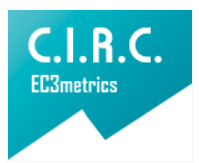Phonoaudiological Vocal Training Protocol For Singer - VOCALICAL -
Protocolo de Entrenamiento Vocal Fonoaudiológico Para Cantantes - VOCALICAL -
Main Article Content
Vocal training is a field that can be supported by professions with expertise and knowledge in the subject of voice, such as phonoaudiology. The present investigation evidences and describes the design of a vocal training protocol based on the principles of sensorimotor learning with exercises of the Alexander technique, the Pranayama technique, the Pilates method and the semi-occluded vocal tract and its relationship with: proprioception, respiratory control, increased lung capacity and phonatory efficiency necessary to achieve a vocal economy in favor of the professional performance of the singer. The protocol was validated in its content by 3 judges who are experts in the field, who defined that it is pertinent, relevant, sufficient and coherent, in terms of clarity it was found that the protocol should improve some aspects related to the images of support and clarity in the instructions (repetitions and development), suggestions that were taken into account to make the respective adjustments. In conclusion, vocal training is an extensive process that requires great discipline on the part of the student, however, professions with the expertise and knowledge in the field of voice such as speech therapy, should provide tools to support the work of the voice professionals prior to the appearance of vocal pathologies.
Downloads
Publication Facts
Reviewer profiles N/A
Author statements
Indexed in
- Academic society
- Bogotá: Corporación Universitaria Iberoamericana
- Publisher
- Bogotá: Corporación Universitaria Iberoamericana
Article Details
Alkinim, D. E. (2017). A técnica Alexander e seus beneficios aplicados ao músico. Trabajo de investigación, Universidade Federal de
Uberlândia, Uberlândia, Brasil.
Brennan, R. (1992). La técnica Alexander. Barcelona, España: Plural.
Bustamante, C. (2003). El cantante lírico. En I. Bustos, La voz. La técnica y la expresión (págs. 73-75). Barcelona, España: Paidotribo.
Bustos, I. (2003). La voz. La técnica y la expresión. Barcelona, España: Paidotribo.
Cordeiro, A. L., Barbosa, A. F., Leitao, L. P., Araujo, P. A., Carvalho, S., & Guimaraes, A. R. (2015). Pilates principles in lung function in
patients in cardiac surgery postroperative. Brazilian journal of surgery and clinical research, 11(2), 16-19. Obtenido de https://www.
mastereditora.com.br/periodico/20150630_211919.pdf
Cornut, G. (1985). La voz. México: Fondo de cultura económica. De Jesus, L. T., Baltieri, L., Oliveira, L. G., Angeli, L. R., Antonio, S. P., &
Pazzoanotto-Forti, E. M. (2015). Efeitos do método Pilates sobre a função pulmonar, a mobilidade toracoabdominal ea força muscular
respiratória: ensaio clínico não randomizado, placebo-controlado. Fisioterapia e pesquisa, 22(3), 213-222. Obtenido de http://www.
scielo.br/pdf/fp/v22n3/2316-9117-fp-22-03-00213.pdf
De las Heras, G., & Rodríguez, L. (2005). Materiales para cuidar mi voz. Castilla y León, España: Fundación Mapfre.
Guzmán, M. (2011). Entrenamiento del vibrato en cantantes. Revista CEFAC, 13(3), 568-578. Obtenido de http://www.scielo.br/pdf/rcefac/ v13n3/136-09.pdf
Hernandez Sampieri, R., Fernández Collado, C., & Baptista Lucio, M. (2010). Metodología de la investigación (6ta ed.). México D.F.: McGraw Hill / interamericana editores, S.A. de C.V.
Jackson Menaldi, M. C. (1992). La voz normal. Buenos Aires, Argentina: Ed. Medica Panamericana S.A.
Kuppusamy, M., Kamaldeen, D., Pitani, R., Amaldas, J., & Shanmugam, P. (2017). Effects of Bhramari Pranayama on health – A systematic review. Journal of traditional and complementary medicine, 8(1), 11- 16. doi:10.1016/j.jtcme.2017.02.003
Labiano, L. M. (1996). La técnica de la respiración: Aportes psicoterapéuticos. Salud mental, 19(4), 31-35. Obtenido de http://
revistasaludmental.com/index.php/salud_mental/article/view/605/605
Le Huche, F., & Allali, A. (2003). La voz: anatomía y fisiología de los órganos de la voz y el habla (2da ed., Vol. 1). Barcelona , España: Masson.
Maas, E., Robin, D. A., Austerman Hula, S. N., Freedman, S. E., Wulf, G., Ballard, K. J., & Schmidt, R. A. (2008). Principles of motor learning in treatment of motor speech disorders. American Journal of SpeechLanguage Pathology, 17(3), 277-298. doi:10.1044/1058-0360(2008/025)
Maldonado Gama, E., Romarco, E., Silva, S. M., & Ribeiro Barbosa, M. (2016). Contribuições Da Educação Somática Para Os Profissionais Da Área Da Saúde Hospitalar. Revista Conexão Uepg, 12(2), 314-329. Obtenido
de http://www.redalyc.org/pdf/5141/514154368013.pdf 72ISSN-L: 1657-2513 ARETÉ ART 19 (2) pág. 1-74
Protocolo De Entrenamiento Vocal Fonoaudiológico Para Cantantes Vocalical
Martínez-Pubil, J. A., Acebal-González, A., Fernández Álvarez, R., & Vega-Álvarez, J. A. (2017). Pilates en pacientes con espondilitis
anquilosante: repercusión en la función pulmonar. Fisioterapia, 39(6), 250-256. doi:10.1016/j.ft.2017.05.001
Padovani, M. I. (2017). A técnica Alexander aplicada ao canto coral: caminhos para uma educação integral. Tesis de maestría,
Universidade Estadual de Campinas, Barao Geraldo, Brasil.
Saoji, A. A., Raghavendra, B. R., & Manjunath, N. K. (2018). Effects of yogic breath regulation: a narrative review of scientific evidence. Journal of Ayurveda and integrative medicine, 10(1), 50-58. doi:10.1016/j. jaim.2017.07.008
Simões, T. L., & Furst Santiago, P. (2015). Metodologia de pesquisa para investigar a inclusão de práticas corporais no ensino-aprendizagem da técnica vocal para grupos corais infantojuvenis. Educação Musical: formação humana, etica e produção de conhecimento.
Natal, Brasil. Obtenido de https://www.academia.edu/21479817/ Metodologia_de_pesquisa_para_investigar_a_inclus%C3%A3o_
de_pr%C3%A1ticas_corporais_no_ensino-aprendizagem_ da_t%C3%A9cnica_vocal_para_grupos_corais_infantojuvenis
Telles, S., & Naveen, K. V. (2008). Voluntary breath regulation in yoga: its relevance and physiological effects. Biofeedback, 36(2), 70-73.
Thomas, L. B., & Stemple, J. C. (2007). Voice therapy: does science support the art? Comm Dis Rev, 1, 51-79. Obtenido de https://es.scribd.com/ document/247018431/2-Voice-therapy-does-science-support-the-artTRADUCCIO-N
Torres, B. (2007). Anatomía funcional de la voz. En J. Rumbau, Medicina para el canto (online). Barcelona, España. Obtenido de http://www. medicinadelcant.com/cast/llibre. html
Van Stan, J., Roy, N., Awan, S., & Stemple, J. C. (2015). A taxonomy of voice therapy. American Journal of Speech-Language Pathology, 24(2), 101-125. doi:10.1044/2015_AJSLP-14-0030

















